
It is quite a rare thing for technology to purposefully take a backwards step in performance, but that is exactly what is happening in the world of waterproof jackets at the moment. This isn’t just affecting the best waterproof cycling jackets, but everything waterproof, thanks to a de-facto global ban on PFAS, also known as forever chemicals.
The short version is that both the old Gore-Tex membrane and the durable water-repellent coatings contained fluorine, the use of which in manufacturing is a bit of a no-no. There isn’t anything to suggest that a PTFE (polytetrafluoroethylene) membrane is in any way harmful to the wearer, but the PFAS ban is a huge umbrella under which outdoor clothing has been included. To put it bluntly, new jackets for the time being just aren’t going to be as good as the last of the old crop.
The Rapha Pro Team Gore-Tex Jacket is one of the last of the old crop. Shakedry jackets have all but disappeared, but this is more of what you might think of as a ‘normal’ waterproof. A traditional 3-layer construction, with a Gore-Tex Active membrane sandwiched between a liner fabric and an outer face fabric treated with a good old-fashioned DWR. It is in my opinion about as good as jackets are possible to get, and without being overly dramatic there’s a chance this might be as good as jackets ever get. I’ve been using it for the last year or so in some truly awful weather, and for a while I wrestled with whether I should review it or not. It is, after all, soon to be illegal to sell in the United States as of January 2025, and while it’ll remain on sale in Europe beyond that its days are very much numbered.
That being said, my job is ultimately to provide consumer advice. You can still buy this jacket, and it is better than anything currently on sale for its intended use, so for now it’s my pick as the best road jacket out there.
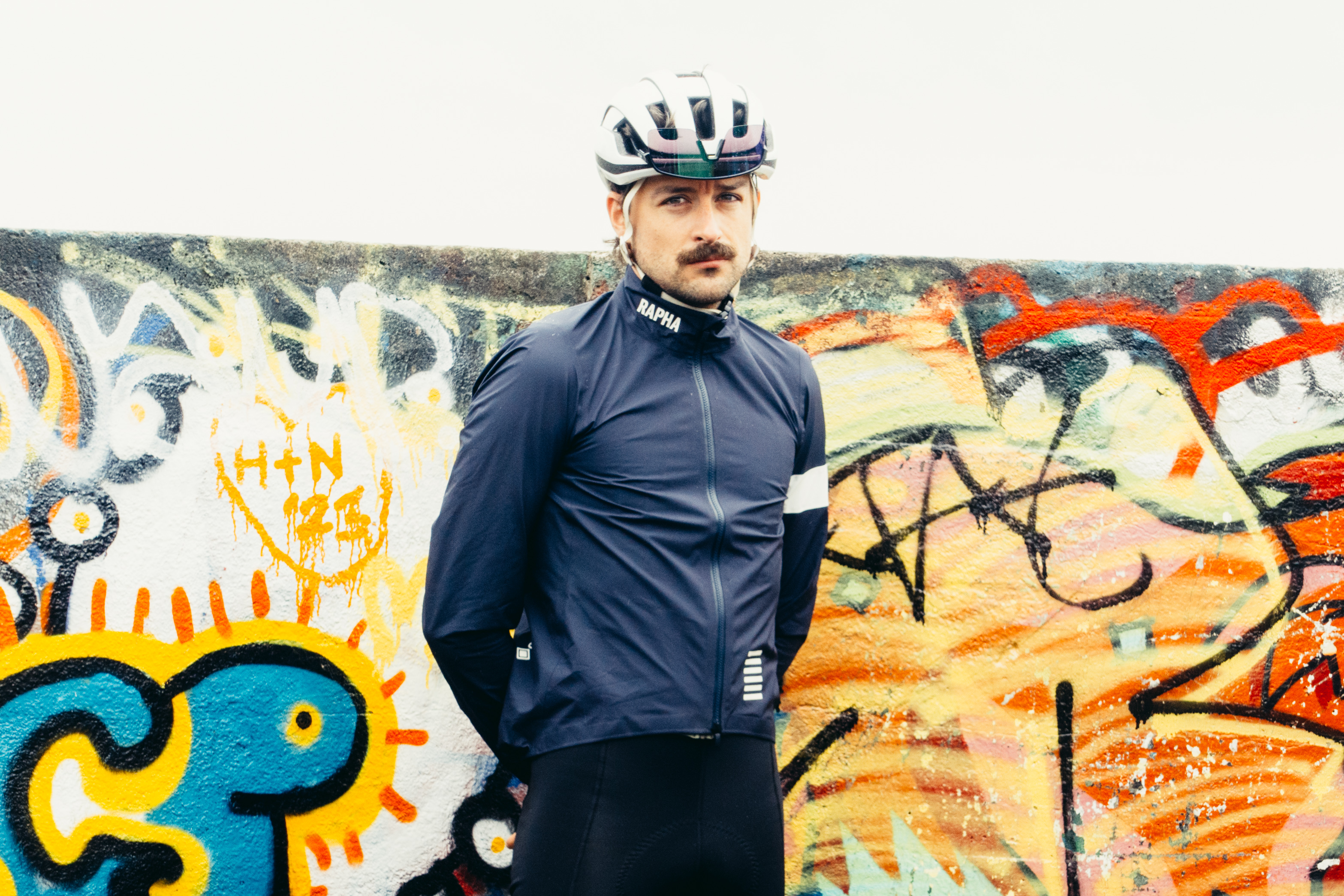
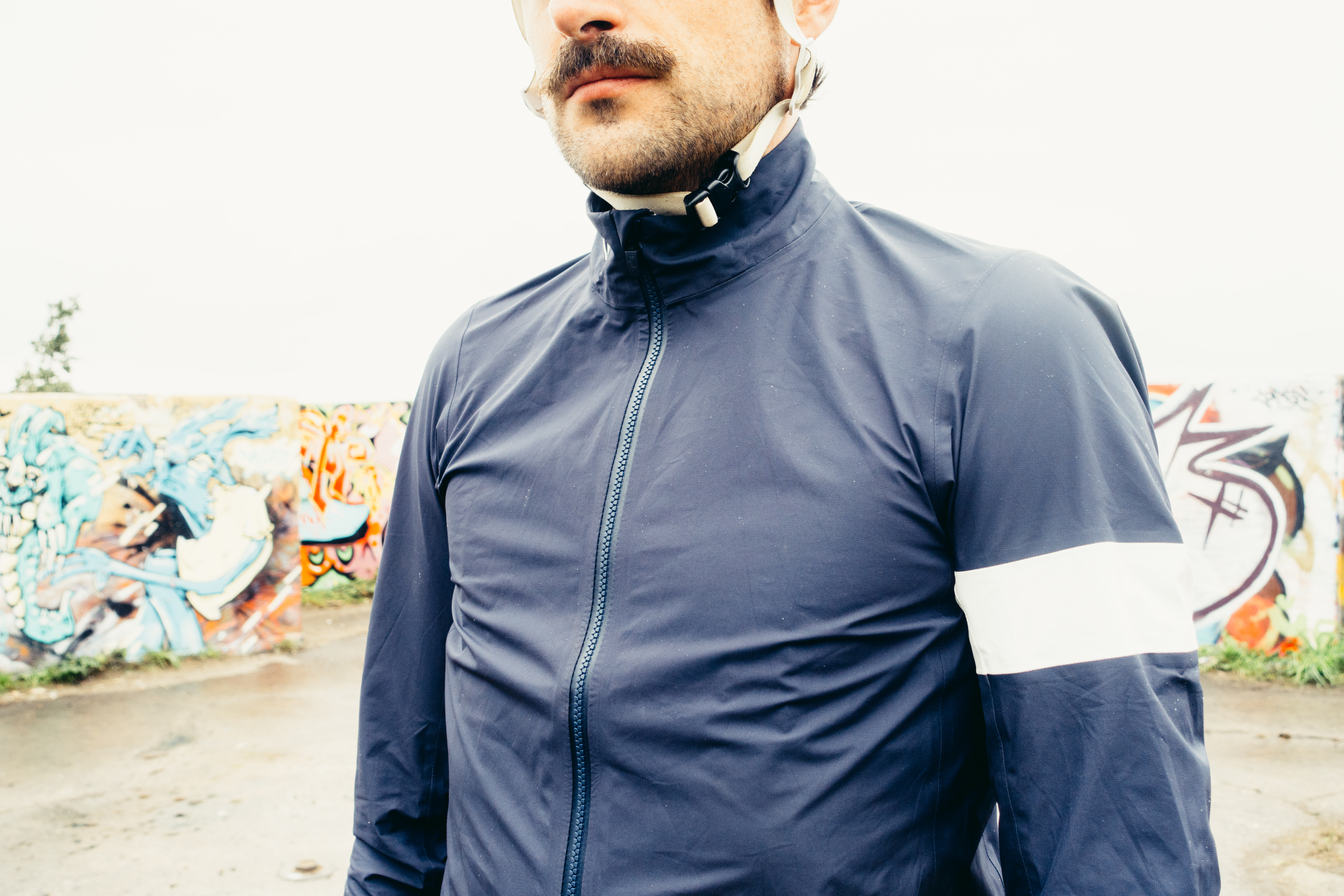


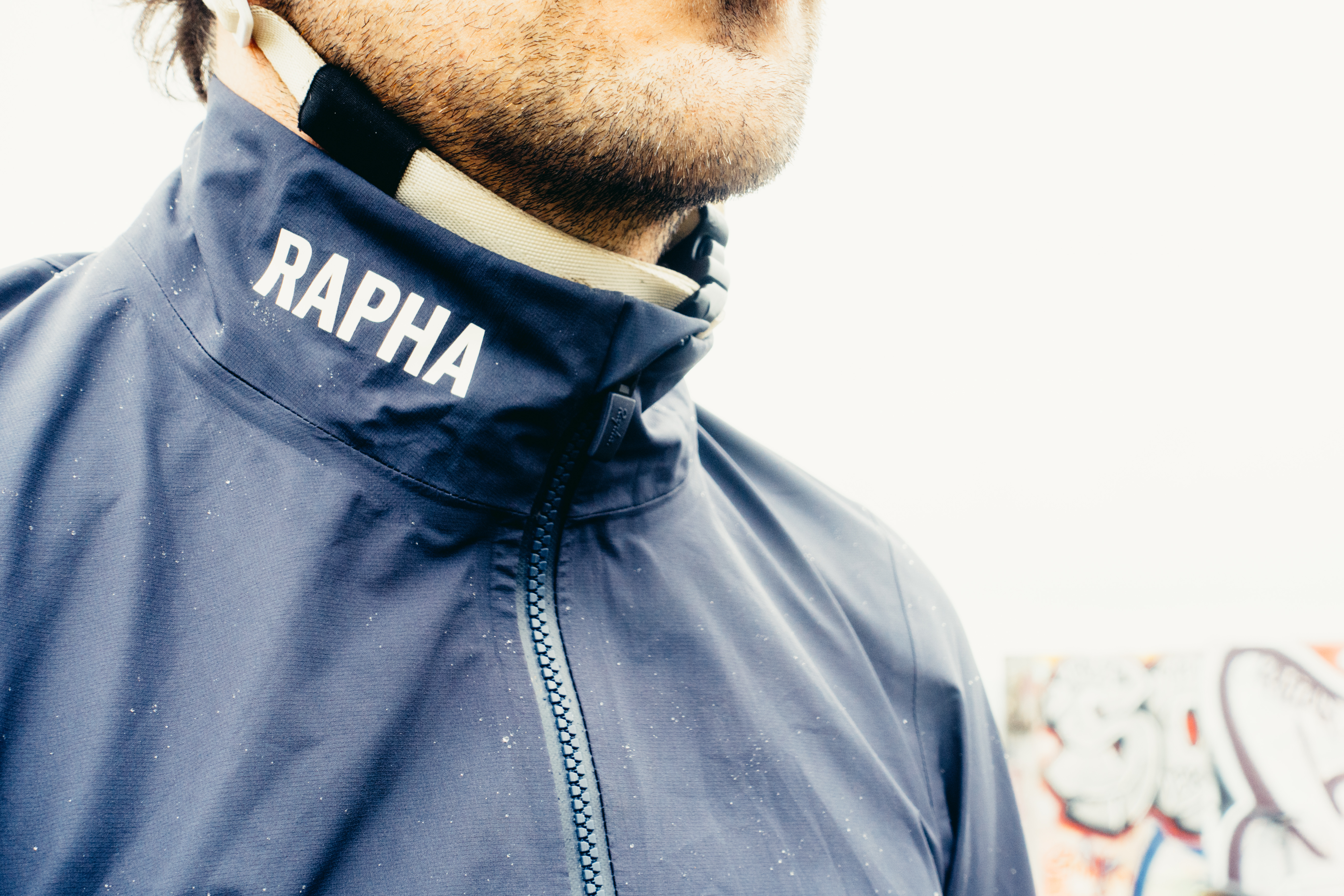
Design and aesthetics
Road cycling jackets have to thread the needle in so many ways. They must be protective enough to keep the elements at bay while being lightweight and packable enough to be stuffed into a jersey pocket. The fashionable bar bag has somewhat made larger, sturdier, or more feature rich jackets an easier carry, but regardless they still must be as light as possible without being flimsy. The fit must also be tight enough to avoid flapping, whilst still allowing the freedom of movement to ride without any restriction, and on top of all of this they have to be breathable enough to not turn into a boil-in-the-bag situation the minute the road turns uphill.
The Rapha Pro Team Gore-Tex Jacket is a classic road jacket in almost every sense. The cut is ‘Pro Fit’, according to the brand, which means it’s relatively tight fitting. It’s not as close as the venerable Pro Team Lightweight Shakedry option, but I still recommend going a size up from your usual jersey size. You may find it a bit more flappy, but that way you’re not going to get any tight spots and have room for mid-layers.
It’s also not quite so aggressively cut as the Assos Equipe RS, which has a very high front, so if you’re like me whereby you often find cycling apparel too short then this is a good option. You’re unlikely to have your jersey poking out the bottom. The rear features a classically dropped tail too, with a basic elasticated him to keep it in place. It’s a lot more dropped than the Maap Atmos jacket, which I think has opted for a much more cropped torso to make it more packable and also more suitable as an emergency shell for slightly less grim conditions.
In order to streamline the jacket there is no adjustability in the cuffs or the hem. No drawstrings, no Velcro, just thin elastic strips confined to the rear hem and the underside of the cuffs. This does mean that despite being a jacket with a relatively sturdy 3-layer construction you can just about stuff it into a pocket without much wailing and gnashing of teeth. The cuffs in particular I’m fond of because they are actually tight on my relatively small wrists. They can expand to accommodate gloves, but I so rarely ride with gloves on, especially in a rain jacket, that this wasn’t an issue for me.
Under the hood the Gore-Tex Active membrane promises really solid figures for waterproofness and breathability. A 28,000mm hydrostatic head figure is more than enough in terms of being basically totally impermeable, and a >25,000g/m2 breathability figure is also among the best on the market. The two way zip is also there for when you need to dump heat fast without having to leave the jacket flapping.
Figures aside it also looks great. It is quintessentially Rapha, with only muted blues available now, but the white armband and RAPHA wordmark on the hem have featured in so many moody, grainy Rapha Continental films that it’s as much of a stylistic institution as any in the industry now.
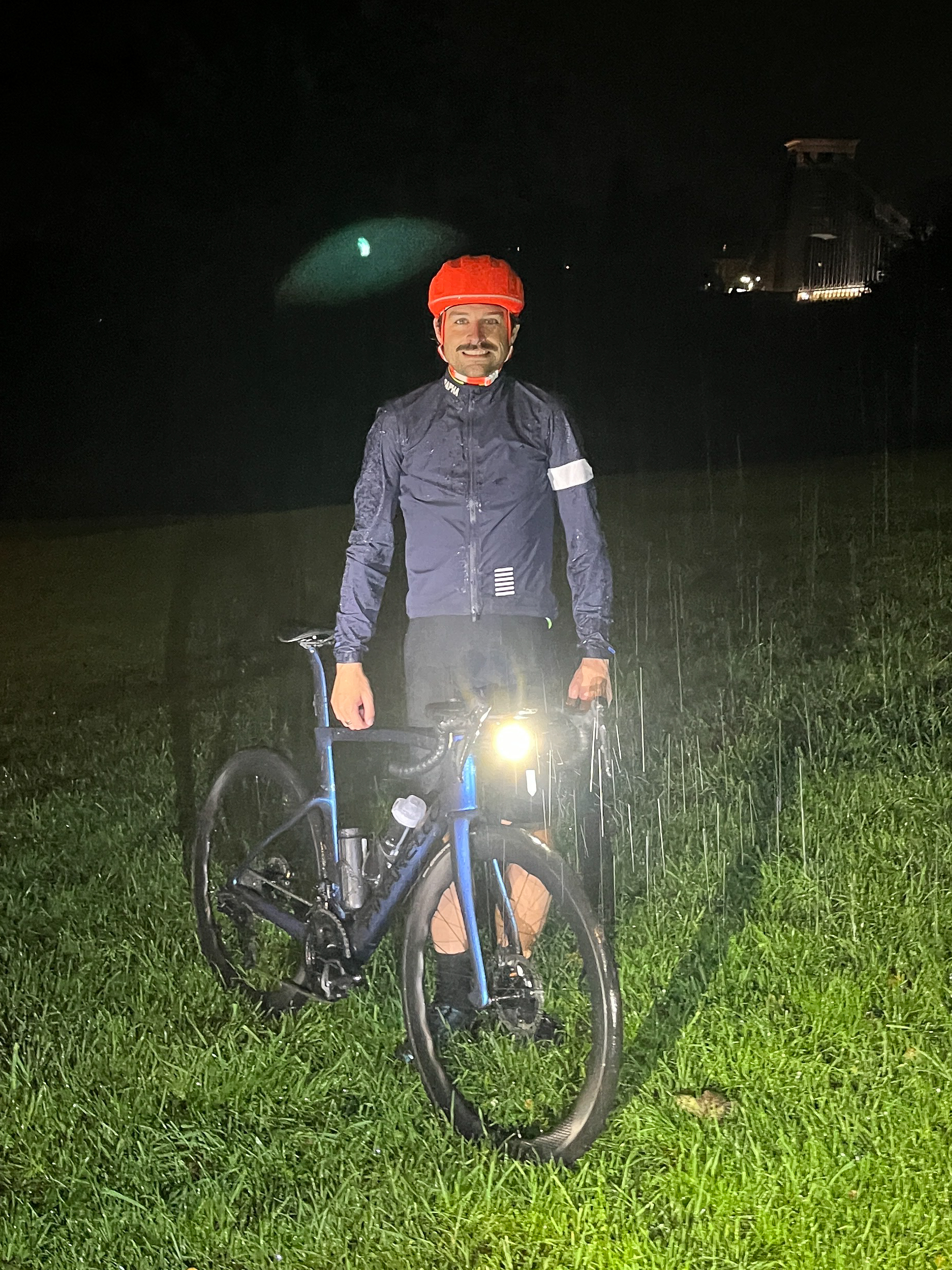
Performance
I do want to reiterate what I said in the intro here: It’s potentially never going to be this good again. I have ridden this jacket hard in some appallingly bad weather and it hasn't even flinched. The DWR has kept on chugging away, helped it must be said by those lovely evil fluorinated chemicals, and the membrane has remained staunchly impervious even when flying into raindrops at over 60kmh - Something that effectively raises the pressure of the hydrostatic head even with small droplet sizes.
One acid test was a recent ride with my colleagues. An hour from Bath to Bristol on the flat, followed by an hour and a half of hill reps around the city. Full gas, max heart rate stuff in torrential rain and unseasonably mild temperatures. Besides some wicking at the cuffs, neck, and lower hem especially (my fault for not using mudguards) I was more or less totally dry, and comfortable enough to have a pizza and a pint without wishing I was home, in bed, with a cup of hot cocoa. The DWR on the face fabric is really the key here. The 28,000mm hydrostatic head is enormous, and really overkill for an activity that doesn’t load the membrane in any way, but it never showed any signs of wetting out. Modern, post-PFAS jackets just can’t take sustained rainfall in the same way without getting soggy, and while PFAS-based DWR treatments do eventually give up, in my experience, they are more durable as well as being more repellant.
The cuffs are a real winner. The half elastic does the job extremely well of keeping them tight enough to keep water at bay, and while I never wore it with gloves (it has to be around 5ºC or less for those to come out) they'll be even more snug with something on your wrists. The tightness does mean the jacket is a little harder to take off on the fly, so you either need to be pretty confident in riding no handed, or pull over. That being said, it’s a jacket so well suited to sustained rainfall, as opposed to off-on-off jackets like the Maap Atmos, that you will probably find it’s just on for the duration.
The collar is a little higher than most too, which does go some way to keeping the rain out from down the back of your neck. It’s unlined, too, and while I understand the thinking behind jackets like the Endura Pro Sl Waterproof Shell Jacket, in those cases having a fleecy lined neck does mean that when water does get it (it will, eventually) it saturates the material and you end up with a cold, wet neck. Better to have it unlined so water doesn’t stick around. I’ve tried some jackets that try and cinch at the neck, and so far they’ve all felt like I’m being choked, which isn’t something I’m into day to day.
Thermal management is often the real kicker for a waterproof, rather than its ability to keep water out. If you get too hot you’re going to sweat, and beyond a certain point it becomes a bit of a runaway loop. The Pro Team Gore-Tex does brilliantly in this regard, considering it has no physical vents built in in an effort to maintain a good degree of packability. The double zip is a little sticky sometimes but it very easily allows you to dump a lot of heat. This is far from a unique feature, and it’s actually something that I now mark a jacket or even a mid layer down on quite heavily if it doesn’t have it, but even fully zipped up I managed to maintain a relatively normal temperature even when smashing up some very steep inclines.
I am slightly sad that the high-vis yellow option isn’t available anymore for the safety-conscious, but also it is a jacket that’s soon to be redundant so I can forgive the brand for not widening the colour choice at this time.
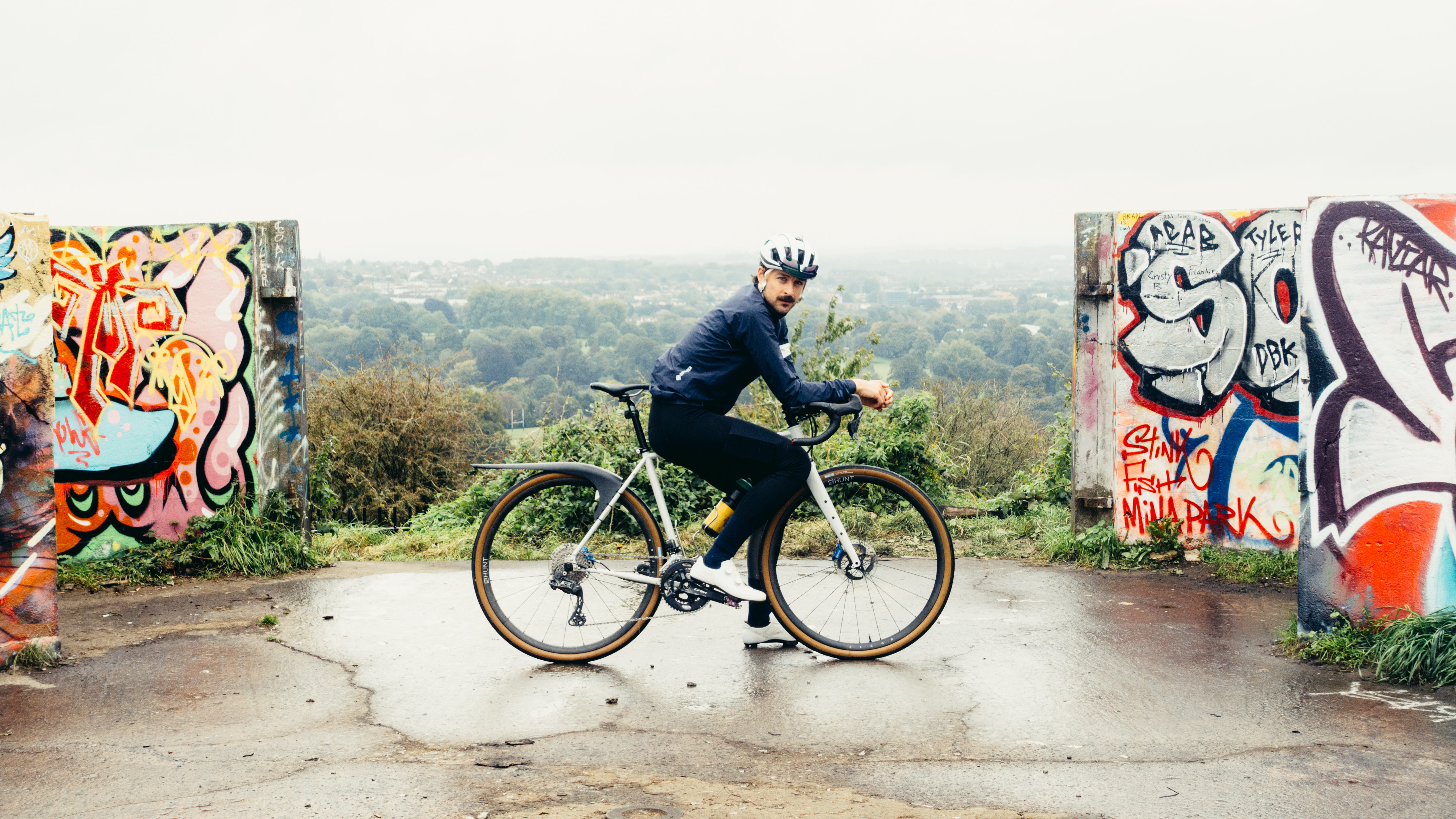
Value
The more expensive a jacket is, the better it has to perform. Or at least it has to maintain the same level of performance in worse weather, which is the same thing. A £275/$325 price tag is pricey, but it’s far from megabucks in the world of waterproof jackets. The Rapha Explore Gore-Tex Jacket for example is a full $200 more, and while it has a hood, a big vent, and some novel poppers, it does more or less just as well as this one in terms of protection.
It is always worth repeating that value is not the same as price. This is an expensive jacket, but it is streets ahead of what I rate as the best value road waterproof, the Rapha Core Rain Jacket II. Better fitting, better cuffs, more packable, more protective, with a better zip and a nicer lining material.
It is also I’m afraid to say for those of you particularly keen on avoiding PFAS, better than newer, fluorine free options, both in terms of performance and durability. It’s worth noting that DWR treatments involving fluorine are also oil resistant to a pretty high degree, while non-fluorinated ones aren’t, and I find this is borne out in the number of grease stains I pick up in modern jackets
In short, when viewed in the context of the changing waterproof landscape it’s almost a bargain when you consider new, worse jackets are going to cost as much if not more.
Verdict
The Rapha Pro Team Gore-Tex Jacket is one of the last of a dying breed of old, pre-PFAS ban garments that represent the pinnacle of bad weather riding gear, not just for the time being, but perhaps forever unless someone suddenly decides that forever chemicals aren’t actually all that bad - Maybe it just needs the decision makers to be based in the southwest of England…
Well cut, extremely protective, enough for sustained riding in heavy rainfall. The DWR treatment has lasted well, and works better than modern alternatives, and all things considered, it’s not actually that expensive. It is, having tested countless waterproof jackets now, the best option on the market right now so it’s something I recommend buying now while it still exists unless you’re very PFAS averse.







